Svalbard is known for its polar bears, but what about brown bears on mainland Norway? You may be surprised at how few live in Norway.
The population of Scandinavian and Finnish Brown Bears has been recovering of late, but very few live in Norway.
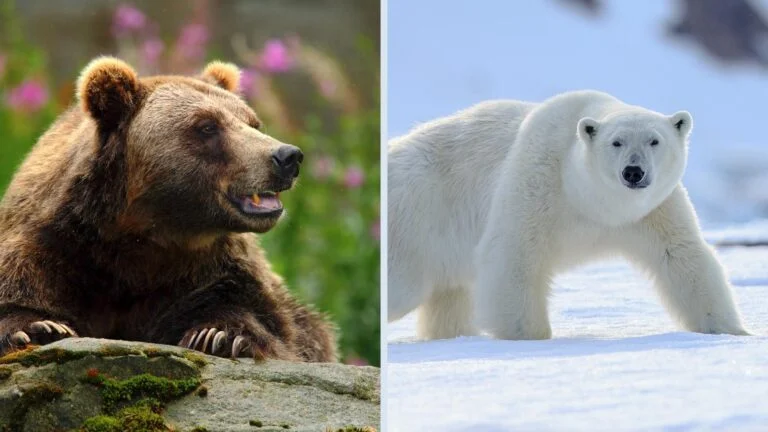
Bears will always be associated with the North. Words like Arctic, refer to the North by its association with Ursa Major and Ursa Minor.
The two bear constellations appear in the North of the sky. So, Arctic effectively means ‘where the bears are’ and Antarctic means ‘where the bears are not’!
Bears in northern Europe
While bears come in many different types, the bears of Norway are of the Eurasian Brown Bear subspecies, ursus arctos arctos. This is a very close cousin of the Grizzly Bears in North America.
In terms of size, the Brown Bear is the second largest species of bear after the Polar Bear.
It’s not too long ago that these bears roamed all across the northern hemisphere. Overhunting led to them becoming extinct in many countries such as Britain, France and Denmark. In other countries, numbers were vastly reduced but they managed to retain enough to keep a self-sustaining population.
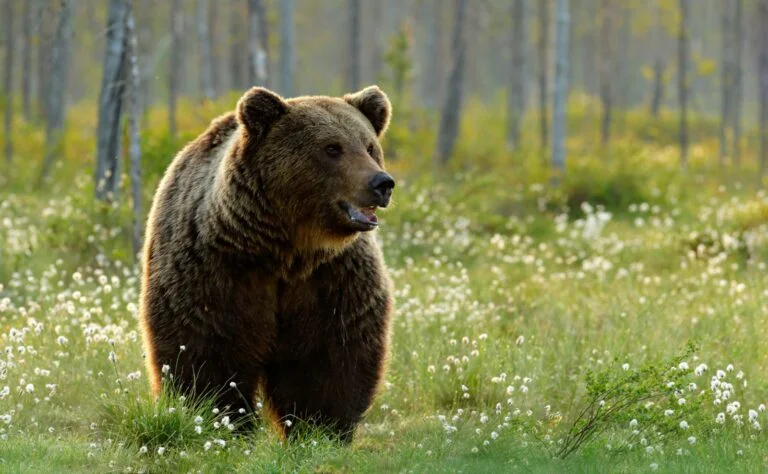
Around the world, there are around 110,000 brown bears, according to the WWF. Close to half of these live in Russia and a quarter live in the Americas.
In 2010, there were approximately 14,000 brown bears living in Europe, spread out in 10 separate populations throughout the continent. This ranges from a handful in the Pyrenees to a few thousand in Romania.
How many Brown bears live in Norway?
Norway is one of the countries where the brown bears are definitely endangered. While bears were extinct in Britain no later than 1000 CE, Bears were still fairly prolific through all of Scandinavia until the start of the 20th century.
Even as recently as the 19th century, bears were still being hunted in large numbers in Norway. It was political will at the time that bears should be exterminated. The government paid bounties for killing bears until the turn of the 20th century.
With 2-300 bears being killed each year this led them to the brink of extinction. The political mood changed and the bounties stopped but from around 5000 in the middle of the 1800s, only 130 were left in the whole of Scandinavia.
Since then, scientists have been trying conservation efforts to restore numbers. These have met with the greatest success in Sweden and Finland but less so in Norway. By the mid 1990s, there were around 1000 bears living in Sweden but still only around 30 living in Norway.
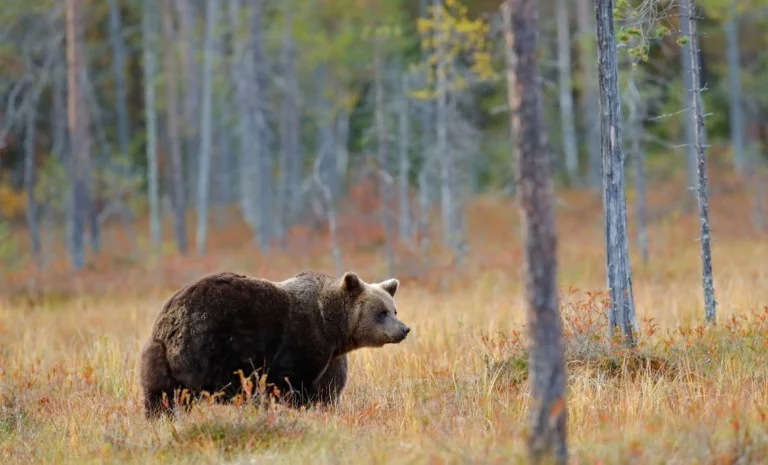
A nationwide bear surveillance project has been operating since 2009. It reports annually on the numbers of bears found and the numbers of litters that have been born. The good news is that these conservation efforts have finally started to show success.
It's important to note that these are not necessarily exact totals. The survey analyses populations from DNA samples collected in the wild. So, they know how many individuals are involved in the samples but there may be others.
In 2020, 150 brown bears were detected by the survey. This included 65 females and 85 males. This was an increase of 2 from 2019, which itself was an increase in 10 from 2018. The numbers increase every year, but experts aren’t congratulating themselves too much just yet.
Brown bears in nature
Brown bears are, by their nature, fairly shy creatures. They are not aggressive by nature and will stay away from humans and keep to themselves where possible. The females tend to stay within small geographical areas, but the males will roam over much wider distances.
Bears are not particularly dangerous to man and won’t be, so long as their numbers remain relatively low. The biggest threat to man comes when man encroaches on the bears’ territory. This is why bear attacks, while still uncommon, are much more common in North America.
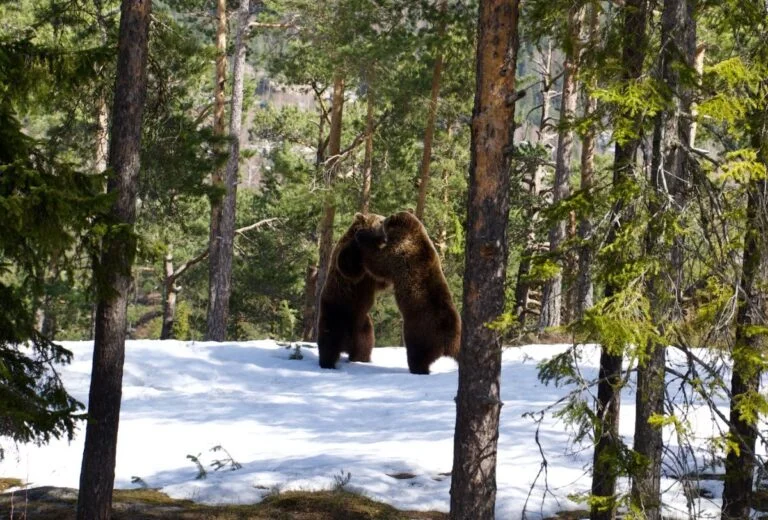
There are a lot more bears, a lot more people, and more people living close to bears in the US and Canada. In North America, around 2 people are killed by bears each year, which is still pretty good odds. In Scandinavia there have only been 3 fatal bear attacks in the past century!
Bears are omnivores and will eat meat as well as plants. Back when they roamed the earth more freely, meat would have been around 80% of their diet but as their habitats have declined, this is down to around 10%.
Nowadays their primary diet consists of nuts and berries. These are the nutrient rich and calorie-dense foods that allow them to build up their stocks for hibernation. But still…if you show a bear a sheep, you will end up with a fed bear and a dead sheep!
Moving to a sustainable population
While brown bears are not considered endangered globally, in Norway, the population is critically endangered. It would not take much to see the population go fully extinct.
Around the world brown bears are classified as ‘least concern’ but for Norway, preserving the brown bear is a very real concern.
Bears can live long lives. In captivity they have lived for over 40 years but in the wild the average age will be under 30. Brown bears are the longest lived of all the bears, on average. When they produce litters, the females can give birth from 1-4 cubs.
It is, in fact, litters that are the focus of conservation efforts. The Storting has set a target of 13 litters to be born each year. This is the level at which the population of bears becomes viable, sustainable and growing to healthy levels.
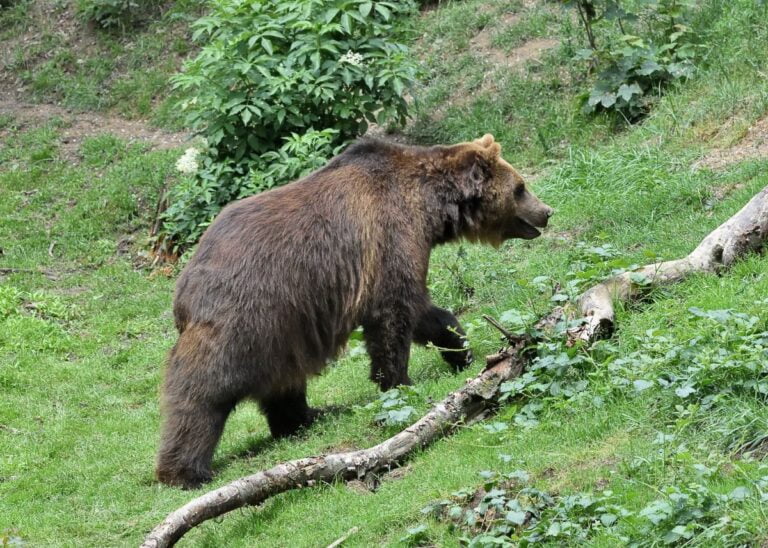
In 2020, despite a 1.5 litter increase on 2019, there were only around 8.5 litters of cubs born. So, Norway still has a fair way to go before they can relax and consider the bear off the endangered list. But with the efforts of scientists, things for now seem to be moving in the right direction.
Where do bears live in Norway?
Most of the female bears in Norway live in areas that are adjacent to females in Sweden, Finland and Russia. The five main areas are Pasvik, Anárjohka, inner Troms, eastern Nord-Trøndelag and eastern Hedmark.
Because of this, it’s likely that several of the bears whose main nesting grounds are in Norway spend parts of the year in one of the neighbouring countries.
Males cover much larger areas than the females, especially during migration periods, though obviously they return to the females to mate. Theoretically, given the known range of bears, it’s possible to see them anywhere in Norway. In practice, they keep to themselves and away from human settlements.
This is true also in Sweden and Finland. Bears live more towards the less-inhabited areas of the North, where their fur protects them from the weather and the weather protects them from people!
In both countries it’s possible to go on bear-watching expeditions. Starting when the bears leave hibernation in spring until they start to become less active in late autumn, you can get up close and personal, from the protective comfort of a camouflaged hide.
This experience is not available in Norway as the population of bears is still too fragile to risk unnecessary human contact.
Polar Bears in Norway
Of course, the Brown Bear isn’t the only bear that you’ll find on Norwegian territory.
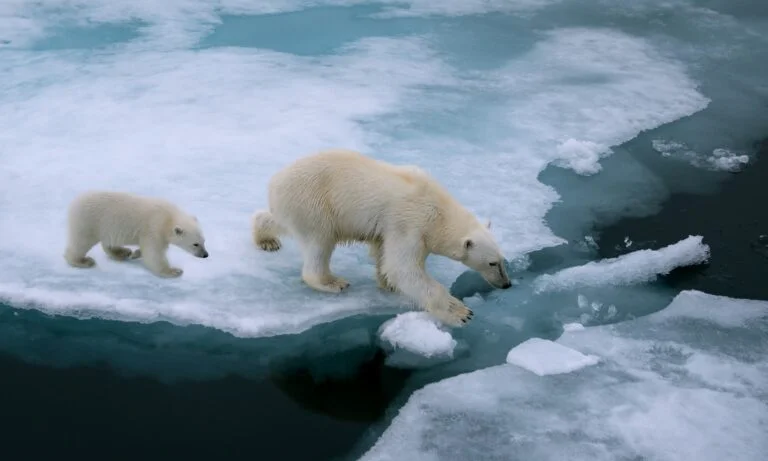
While they’re not native to mainland Norway, there are plenty that make their home on the Svalbard archipelago for at least part of the year.
In winter, mostly the bears will be camouflaged by the snow and ice, and with no daylight they can be difficult to spot. In summer, however, when some of the snow and ice melts and the sun never leaves the sky, polar bear spotting is a fun, yet slightly dangerous pursuit.
The best, and safest, way to spot the polar bears is a boat cruise. These will take you around the coast and through the icebergs where you can photograph frolicking bears through your zoom lens!
Polar bears are, in fact, so common on Svalbard that if you leave the relative safety of the towns, you are required by law to be accompanied by a qualified guide who is armed with a shotgun. The bears are usually not a danger to humans and seldom approach the human settlements. But if they do attack, there’s only going to be one outcome.
In 2020, tragedy struck when a Dutch visitor was killed in a rare attack on a campsite near Longyearbyen airport. The Polar Bear was shot during the attack and escaped but was later found dead.
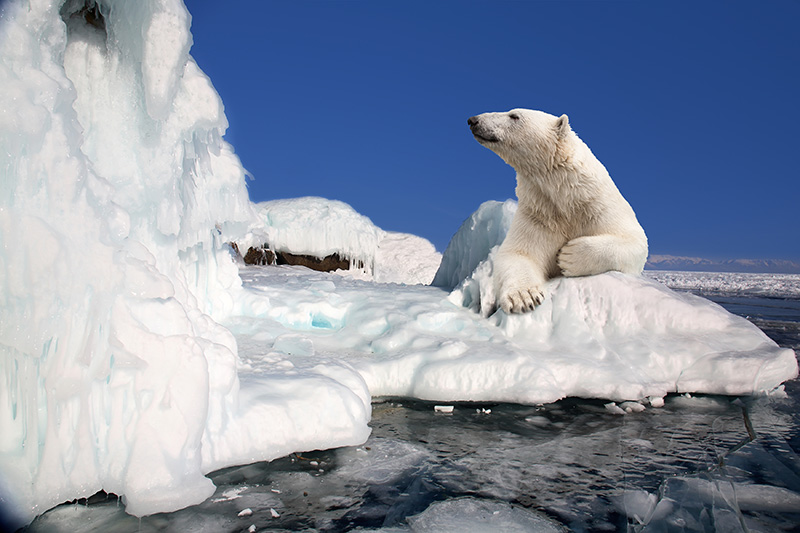
The Brown Bear of Norway fairytale
There’s an Irish fairy tale that often goes by the name of The Brown Bear of Norway. In the story, a King has three daughters, and he asks them who they would like to marry.
The first two choose the Kings of Ulster and Munster but the third, harking back to a tale of an enchanted prince told by her nurse, says ‘I’ll have no husband but the Brown Bear of Norway’.
They laughed and joked the evening away but that very night, the princess awoke in a great hall where a beautiful prince asks her to marry him. They wed that evening and then he confesses that he has been enchanted by a witch who wished him to marry her daughter.
The prince is cursed to wear a bear suit and appear as a bear during the day before reverting to a man at night. The spell can only be broken if the man weds a woman of her own free will and she endures five years of trials.
Read more: A Fairy Tale Traveller's Guide to Norway
Over time, the woman gets used to seeing her prince only at night. One year later, a son is born, and the couple are elated. Soon after, an Eagle swoops down and snatches the child away. The princess is distraught, but her prince reminds her of the trials she must endure.
After another year, a second daughter is born. The princess takes care to ensure the windows are closed to avoid any problems, but a greyhound appears and runs off with the dog before anyone can catch it.
When the third child is born, the princess takes care not to let the baby out of her sight until one day a woman appeared, frightening the princess, snatched the baby and then disappeared as if by magic.
The princess decides she needed to see her family back home. She was still much in love with the prince but wanted their counsel. She returned home and the family couldn’t think of anything to do to help. She didn’t think she could endure the loss of a fourth child. So, they consulted with a wise woman who told her to find and burn the bear skin so her husband would be hers alone.
She returns to her prince and, eventually, finds the fur and burns it. The prince then informs her that he is now obliged to marry the witch’s daughter and the wise woman she consulted was actually the witch herself. The prince will have no memory of her or their children during the day but will only recall them at night. The prince sets out on his journey to the witch and the princess follows behind.
They meet with their children in turn each night and the princess gains three magical objects plus a half-ring. If she can get to the prince in the witch’s castle and put the ring together, he will remember her fully and the spell will be broken.
She charms her way through an enchanted forest and eventually tricks her way into the castle using the magical objects that she gained from the carers of her children.
On the first night, the prince doesn’t awaken. On the second he hears her song but only as a dream. On the third she manages to convince him not to drink the drink he is given every night.
He does, and he hears her song, awakens and the princess can finally put the rings together. The castle crumbles and the married couple live happily ever after with their children!

